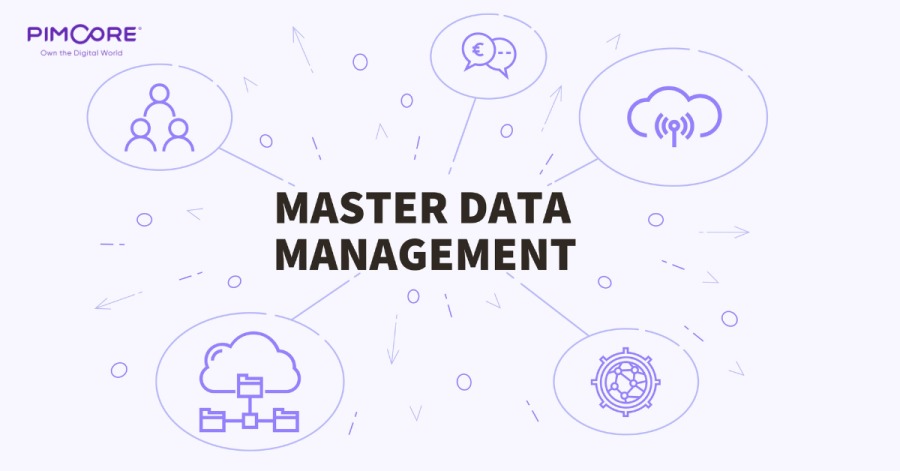5 Musts for an Effective Master Data Management Strategy
Ever wondered what’s common between an impregnable castle and a sound enterprise Master Data Management (MDM) solution? Well, both need a solid architecture, to begin with. Both must be strategically built, technically superior, compatible with their environment, act as a hub for centralized resources, boost overall functioning, all while providing a superior vantage point for governance. And if that’s not enough, a lot of times, both are built over the ruins of yesteryears (read: data lying in disparate systems).

To dive straight into our topic — master data management, the art of countering long-standing systemic challenges through implementing various technologies, disciplines, and solutions, can mitigate risks, increase efficiencies and streamline data flows.
However, with the increase in business users and stakeholders, and a plethora of new data coming in due to the high demand of data-driven insights, predictive analysis, behavioral profiling, and IoT, the need for managing data has gone to a different level. Here are five key steps to steer a successful master data management strategy for your product.
Step 1: Profile Your Master Data
Without identifying what you’re dealing with, it’s impossible to make it work to your advantage. Compromised data can jeopardize your project quicker than anything else, as many key strategic decisions hinge on your data quality.
Before you put any unit of master data in a centralized source, it’s important to go through every single data record from every source system that generates or updates data with a fine-tooth comb to find discrepancies and any concealed data relationships.
Data profiling helps you comprehend data quality issues and build guidelines for rectification of defected data. It also provides the capability to examine its future business impact, which can become the basis of transformation and standardization of data.
Step 2: Consolidate Your Master Data
Without merging records from numerous trustworthy sources, consolidation of master data is impossible. The good news is most cutting-edge master data management software is application agnostic and can store all corporate master data from every system in any diverse IT atmosphere, pertaining to customers, distributors, suppliers, websites, partners, products, assets, etc. In other words, it’s about bringing together every bit of data, existing in whichever source systems, from CRMs and ERPs to order management systems (OMS) and legacy systems. Consolidating data also helps eliminate duplicate or unwanted content, and maintain trackability. This helps make it clear what data is recorded and what information gets fed to the main repository.
Step 3: Cleanse and Govern Your Master Data
Cleansing involves the correction of errors, matching, standardization, and enhancing data. For instance, data cleansing functions can be created to apply simultaneous changes to data records and reduce physical effort. So, if you want to change ‘Co.’ (denoting company) mentioned in every record, to ‘Company,’ then a data cleansing function can be created to automatically apply this change in every record.
Data governance, on the other hand, places people and processes at the highest priority, and empowers them with automation, in order to securely deliver trusted data to users across the enterprise. All this ensures availability, usability, security, and integrity of data, and is done by creating data definitions, data quality rules, access controls, regulations, and privacy policies.
Step 4: Share Your Master Data
What good is clean, enhanced, top quality data if it’s just sitting in silos? For sharing to happen smoothly, an up-to-the-minute, service-oriented architecture (SOA) is required to expose data to business processes and disseminate it to applications. Put differently, an SOA is integral to realizing the full potential of master data.
Enabling data sharing of all types, such as master, analytical, or transactional data via several forms of integration to meet all data sharing needs is imperative for enterprises. Data sharing also extends beyond business borders, with external partners such as suppliers. Sharing of customer data also happens between the back office, service, and sales, for CRM projects.
Step 5: Leverage Your Master Data
Since MDM creates a single version of the truth about every master data unit, it’s the perfect vehicle to make sense of the information at hand. It can help companies gain key insights about products and customers to derive actionable information instantly. Every relevant bit of information is used to connect the dots to arrive at well-informed, data-driven business decisions. Today, all kinds of enterprises, whether big or small, are capable of amassing large quantities of organized and unorganized data. This can be turned into trustworthy data records via a sound MDM implementation, and further leveraged to improve customer experience, boost sales, and improve productivity and compliance.
Read Whitepaper- How to iron out critical issues during PIM-MDM implementation to suit the enterprise purpose?
Get a Sound MDM Strategy
Data can outlast applications, technologies, and systems, as advancements in technology may lead to occasional re-engineering of applications, but assets, business products, customers and suppliers, generally stay as is.
A good MDM software can enable enterprises with powerful applications needed to consolidate and control the lifecycle and quality of master data. Businesses can save huge overheads in traditional data upkeep, drastically improve selling power and supply chain efficiency, and boost customers’ trust and time to market.
Organizations are doing every bit to pull off these objectives. They’ve realized a smart strategy is imperative, whether it’s to do with building castles or implementing an enterprise MDM. After all, building anything in the sky (read: castles) has never led organizations anywhere.
Source: The post originally published on Dzone.
Artikel von Rahul Singh
Blog ansehen
Red Hat powered leading online publication on Opensource.com acknowledges Pimcore product informatio ...

Data is the central concept around which the business world revolves, and decision-makers are not fl ...

Data and analytics are the foundation of any digital transformation initiative. Every organization t ...
Diese Stellen könnten Sie interessieren
-
Part Time Sales Assistant
Gefunden in: Talent AT C2 - vor 1 Tag
JD Sports Österreich Wien, Österreich Nebenberuflich· Part Time Sales Assistant / Verkäufer (m/w/d) bei JD Sports Österreich | softgarden · View job here Part Time Sales Assistant / Verkäufer (m/w/d) · Teilzeit · Wien, Österreich · Ohne Berufserfahrung · Wir suchen Dich zum nächstmöglichen Zeitpunkt als Part Time Sales Assistan ...
-
Marketingmanager (m/w/d) Customer Solutions
Gefunden in: Jobs Search AT C2 - vor 5 Tagen
Berner Ges.m.b.h. Braunau am Inn, Österreich GanztagsFür unser Headquarter in Braunau am Inn suchen wir einen Marketingmanager (m/w/d). · Berner ist ein führender internationaler Direktvertreiber für das Bau- und Kfz-Handwerk sowie für die Industrie. · Die Werte und die Nachhaltigkeit eines Familienunternehmens sind für uns ebenso ...
-
Technische Hausverwaltung
Gefunden in: Talent AT C2 - vor 4 Tagen
Objekt & Facilitymanagement Graz, Österreich GanztagsIhre Aufgaben: · Umsetzung von energieeffizienten und zukunftsträchtigen bau- und haustechnischen Lösungen für unsere Bestandsobjekte · Regelmäßige Begehungen der Liegenschaften im zugewiesenen Portfolio · Erstellung von Kostenschätzungen und Leistungsverzeichnissen · Steuerung d ...


Kommentare